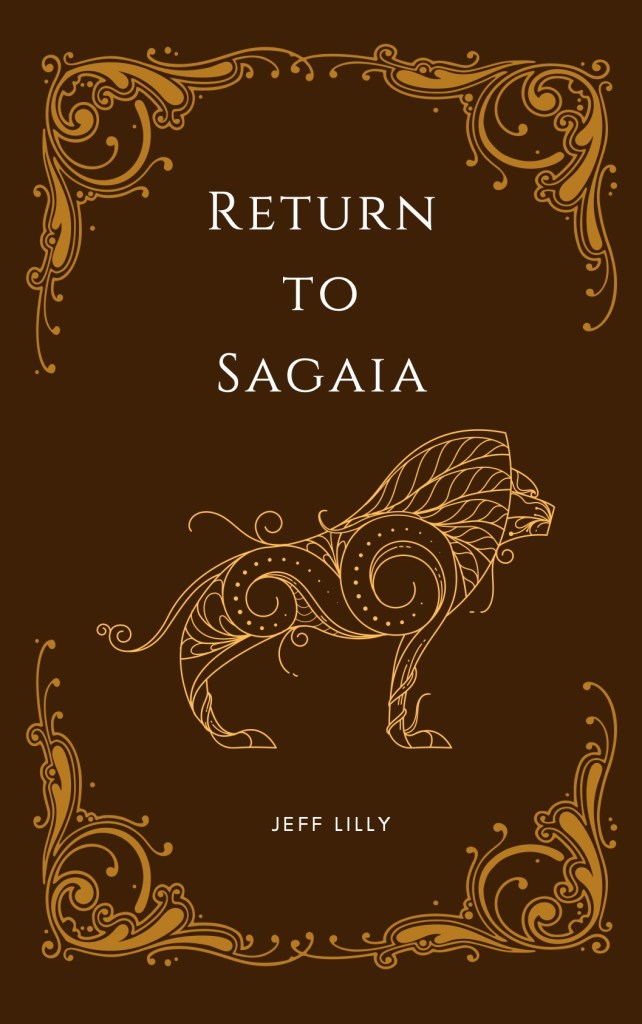My nine-year-old daughter absolutely adores the Chronicles of Narnia. Nothing unusual about that, really — lots of kids do — but why?
After all, isn’t Narnia Christian allegory? It’s blatantly obvious to anyone who gives it a moment’s thought. But I’ve argued elsewhere that children are natural born pagans. So what’s the attraction? Does Christianity touch something in children, after all? Or is Narnia not wholly Christian?
Is Narnia Really Christian?
Some parts are, and very obviously so. Elements that are commonly cited (just from The Lion, the Witch, and the Wardrobe):
- The themes of betrayal, death, resurrection, & redemption;
- The presence of a heavy-handed State that martyrs the hero;
- The humiliation prior to death;
- The martyr who sacrifices to save a sinner;
- Women tending the body are the first to see him resurrected;
- Aslan suffering Edmund’s penalty, and buying him back from the White Witch, who was entitled to him by reason of his treachery, thus paralleling the Christian theories of satisfaction and ransom;
- Aslan asking the children to comfort him, as Jesus asked of his disciples;
- The Stone Table shattering when Aslan is resurrected, just as the curtain in the Temple is rent at Jesus’s resurrection.
However, The Wardrobe can’t be an allegory in the strictest sense. You can’t line up the characters and events precisely and get a nice picture. Why are there four children (and not, say, twelve)? Who is Mr. Tumnus, the faun who tries to seduce Lucy, and then repents and tries to save her? How about the Beavers and Father Christmas? Assuming the White Witch is some kind of amalgam of the Devil and Pontius Pilate, what can we say about her servants, the wolf and the dwarf?…
Lewis himself said that The Wardrobe was no allegory:
“Some people seem to think that I began by asking myself how I could say something about Christianity to children; then fixed on the fairy tale as an instrument; then collected information about child-psychology and decided what age group I’d write for; then drew up a list of basic Christian truths and hammered out “allegories” to embody them. This is all pure moonshine. I couldn’t write in that way at all. Everything began with images; a faun carrying an umbrella, a queen on a sledge, a magnificent lion. At first there wasn’t even anything Christian about them; that element pushed itself in of its own accord.”
— CS Lewis, Of Other Worlds
As he worked with these images, another idea came to him:
“Let us suppose that there were a land like Narnia and that the Son of God, as He became a Man in our world, became a Lion there, and then imagine what would have happened.”
Aslan, then, is a sort of alternate-world Jesus.
The Character of Narnia
What kind of alternate world is Narnia? It wasn’t constructed like Middle-Earth — designed and redesigned over decades, carefully made consistent in history and atmosphere, rich in detail. No, Lewis threw the kitchen sink at Narnia. Mixed up in it are:
- Tons of overt pagan imagery. On practically every page you can find the reverence for the natural world, the awe in the turning of the seasons, polytheism (Greek and Norse gods actually appear in the books), animism, and nature spirits.
- Martial heroism. Most of the books culminate in a great battle, in which militarism is praised, despite some of Jesus’s important teachings about peace.
- The divine right of kings. Peter is planted as the High King by Aslan, and it’s made clear in subsequent books that the King of Narnia always serves at Aslan’s pleasure.
- Anti-feminism. Just about everyone in Narnia is male, except some of the human children from our world, and of course the Witch. The roles of the male and female children are always carefully kept separate and different.
- The place of the child’s imagination in the real world. The question of how “real” Narnia is comes up again and again in the books.
- And possibly Lewis’s ideas about alchemy and astrology. Recently, scholar Michael Ward has suggested that the books are meant to reflect the attributes and symbolism of the seven planets of medieval times: The Wardrobe is Jupiter, Prince Caspian is Mars, The Voyage of the Dawn Treader is the Sun, The Silver Chair is the Moon, The Horse and His Boy is Mercury, The Magician’s Nephew is Venus, and The Last Battle is Saturn. If this is true, the polytheistic character of the books is even more plain.
The Call to the Heart of the Child
So where is the attraction for our pagan children? Well, the pagan elements I listed above are extremely obvious, and that’s got to be part of it. Lewis’s sympathy for his heroes and heroines is also compelling, and on top of that, he’s an engaging author. But take these all together, and you still don’t necessarily have an enduring classic.

I think what’s going on here is that Lewis is channeling not only the Christian story, but the Universal Story — the one echoed in Gilgamesh, the life of the Buddha, King Arthur, Star Wars, and the Tarot. This is the story of the hero who leaves the ordinary world, encounters a place of marvels and tests, achieves a new level of spiritual insight, and returns home again. This, I think, is the story that children connect to when they read the books, and the reason for their enduring popularity.
Rather than belabor the point, I’m going to present an outline for a Narnian Tarot. I can’t think of a better way to show how all the crucial elements of the universal monomyth appear in The Lion, the Witch, and the Wardrobe.
The Narnian Tarot
TRUMPS
- Edmund = The Fool; entering the Wardrobe. The adventure begins with the steps into the unknown. More than anyone else, the whole book is Edmund’s journey.
- The Professor = The Magician Digory Kirke. The hero of The Magician’s Nephew, and the maker of the Wardrobe.
- Lucy = The High Priestess. Lucy serves to initiate the other children into Narnia by leading them into the Wardrobe. Also, through her good sense, grounded yet sensitive personality, and healing powers (through the vial given to her by Father Christmas), she continues to guide and support the group.
- Susan = Empress. Headstrong and commanding, but also nurturing.
- Peter = Emperor. The High King himself, and war hero.
- Aslan = Heirophant. The spiritual leader of Narnia, even in absentia.
- The Beavers = Lovers. This one was hard, given the nature of the book — the Lovers theme simply is not well developed. But the love between the Beavers, and their love for Narnia and Aslan, are essential parts of the story.
- The Sleigh = Chariot. This represents both the Witch’s Sledge and Santa’s sleigh, which are contrasted sharply in the book.
- Deep Magic from the Dawn of Time = Justice. This is the unbreakable law that Aslan and the Witch must both follow.
- Mr. Tumnus = The Hermit. Another hard one, but it seems to fit, given the fact that he lives alone at the edge of Narnia, and his singular emotional journey.
- The Wardrobe = The Wheel of Fortune. It is both the container of the world, and the doorway that leads to changes in fortune.
- Strength = Strength: Lucy and Susan on Aslan’s back. Not only does this nicely match the original Tarot image, but the scene in which they ride him is a celebration of Aslan’s strength and power.
- The Stone Table = The Hanged Man. No one is on the table in the card, since Edmund should be on it, but Aslan takes his place.
- The Stone Knife = Death. The ritual object to be used with the Stone Table, the Stone Knife is a primal tool.
- Deeper Magic from Before the Dawn of Time = Temperance. Transcending justice and earthly law, the Deeper Magic allows Aslan to save Edmund’s life.
- The White Witch = The Devil. All traitors “belong” to her, and it is clear she is unmitigated evil.
- The Wand = The Tower. In the final battle, Edmund breaks the Witch’s wand, destroying her power.
- The Lamp Post = The Star. Appearing at the beginning and end of the book, leading the way to the next stage of life.
- Winter = The Moon. Narnia lies asleep, preparing to be awakened by the Sons of Adam and the Daughters of Eve.
- Spring = The Sun. All of Narnia comes alive under Aslan.
- The Breath of Aslan = Judgment. Aslan returns and nature spirits from sleep by breathing on them.
- Cair Paravel = The World. The final goal; the place from which the characters rule all of Narnia.
SUITES
- Vials. Representing water; from Lucy’s Christmas present of the vial of healing potion.
- Swords. Representing air; from Peter’s Christmas present of a sword and shield.
- Arrows. Representing fire; from Susan’s Christmas present of a bow and arrows.
- Stones. Representing earth; from the Stone Table and Stone Knife, the implements of Edmund’s present, redemption.
One day it might be neat to make this deck. I’d definitely choose illustrations from Pauline Baynes for the cards…
However, since the book reflects Lewis’s worldview, it doesn’t provide a full, three-dimensional exemplar of each of these archetypes. Edmund the Fool, for example, is already flawed and in need of redemption when the book begins; and other trumps are similarly incomplete in character, as noted above. I find myself wondering what it would take to “flesh out” these archetypes, to bring them more closely in line with the universal story. For example, suppose Edmund were a girl. Would that make his struggle with the Witch even more meaningful? Should Kirke, the Magician, have played a more overt role? How could the Lovers have been better represented in the story?…

And then there are the other six books. Working with them is left as an exercise for the reader…
Update May 2023
- While there is still no official Narnia Tarot, I am joining with my collaborator Dakota Stengel to create a Wardrobe Tarot based on the universal mythological and symbolic elements Lewis used in his work. There is no release date yet, but I will post updates here and on my patreon.
- In the meantime, if you want to explore these themes from a pagan feminist perspective (especially the question of what happens to characters like Susan Pevensie), I invite you to join me on a journey to Sagaia. Read more about the book at my writing blog or on my patreon.






Leave a comment